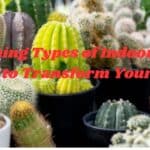Bonsai trees are a fantastic way to bring nature indoors while creating a focal point that exudes both beauty and tranquility. Growing bonsai indoors offers a unique experience that can transform your living space into a miniature landscape. If you’ve been intrigued by bonsai trees but feel uncertain about starting, this guide will help demystify the process, covering everything from choosing the right bonsai species to practical care tips and styling ideas.
Table of Contents
What Makes Bonsai Indoor Plants Special?
Bonsai, which means “planted in a container,” originated in China and was further developed in Japan, where it became a respected art form. Bonsai trees are not a specific plant species but rather a way of cultivating plants in miniature form through pruning, wiring, and careful care. When grown indoors, bonsai can act as living art, with each tree showcasing natural elements like roots, bark, and leaves in a compact and beautiful way.
Why Grow Bonsai Indoors?
Many people choose indoor bonsai trees because they:
- Offer a calming hobby: Bonsai growing encourages mindfulness, patience, and attention to detail.
- Enhance interior decor: Bonsai trees add a touch of greenery and elegance to any indoor space.
- Require minimal space: Because they’re small, bonsai trees are perfect for apartments and small homes.
- Serve as a learning tool: Growing bonsai teaches about plant biology and the art of pruning and design.
Choosing the Right Bonsai Indoor Plant
Not all bonsai trees thrive indoors, as some species require outdoor conditions to grow well. However, several varieties are adaptable to indoor environments. Here are some ideal bonsai trees for indoor cultivation:
1. Ficus Bonsai
Ficus bonsai, particularly the Ficus Retusa and Ficus Ginseng, are among the easiest for beginners. They can tolerate low humidity and are forgiving if you miss a watering occasionally. Their hardy nature and beautiful, dense foliage make them ideal for indoor settings.
2. Jade Bonsai
Also known as the “money tree,” Jade bonsai is a succulent that needs less frequent watering, making it a low-maintenance choice. Its thick, fleshy leaves give it a distinctive look, and it’s perfect for people who travel or have a busy lifestyle.
3. Chinese Elm
The Chinese Elm is another popular indoor bonsai that has lovely, serrated leaves and a graceful, natural shape. With proper care, it adapts well to indoor conditions and offers a more “traditional” bonsai appearance.
4. Dwarf Schefflera
Sometimes called the “Hawaiian umbrella tree,” the Dwarf Schefflera has glossy, umbrella-like leaves. This species is low-maintenance, resilient, and a great option for beginners.
5. Serissa (Snow Rose)
For those wanting a bonsai that flowers, the Serissa is a fantastic choice. It blooms with small, white flowers, and its delicate structure makes it a lovely display piece indoors. However, it’s more temperamental than some other varieties and requires consistent care.
Essential Care Tips for Indoor Bonsai Plants
Bonsai plants, though miniatures, still require basic care for healthy growth. Here are some key tips to keep your bonsai thriving indoors:
1. Light Requirements
Most indoor bonsai trees need bright, indirect sunlight to grow well. A south-facing window is ideal, though some species like Jade and Ficus can tolerate medium light. Avoid direct, intense sunlight, as it can dry out the plant too quickly.
2. Watering Your Bonsai
Watering can be one of the trickiest parts of bonsai care. Unlike typical houseplants, bonsai trees require their soil to remain slightly moist but never soggy. Check the topsoil by touch, and water once it feels dry. Ensure that your bonsai pot has drainage holes to prevent root rot.
3. Humidity Needs
Indoor environments can be quite dry, especially during winter. To maintain humidity, consider placing your bonsai on a humidity tray filled with water. As the water evaporates, it adds moisture to the air around the plant. Another trick is to mist the leaves gently every few days.
4. Pruning and Shaping
Pruning is essential for maintaining the shape and health of a bonsai tree. There are two main types of pruning:
- Maintenance pruning: To keep your bonsai’s shape, prune new shoots back to the desired size.
- Structural pruning: This type of pruning helps shape the bonsai into a specific style and is done less frequently.
Regular pruning is key, but be careful not to over-prune, as this can stress the tree.
5. Fertilizing
Bonsai trees grow in limited soil, which can deplete nutrients quickly. Fertilize your indoor bonsai every few weeks during the growing season (spring and summer). Use a balanced, water-soluble fertilizer, but dilute it to half-strength to avoid overfeeding.
Styling and Display Ideas for Indoor Bonsai
One of the joys of bonsai is finding the perfect spot for your miniature tree. Here are some styling tips to help your bonsai shine indoors:
1. Use Elegant Stands or Shelving
Place your bonsai on a small stand or shelf at eye level to fully appreciate its shape and detail. Choose a stand that complements the tree’s pot or the decor in your room for a cohesive look.
2. Create a Zen Corner
Pair your bonsai with a small fountain, rocks, or sand to create a calming, Zen-inspired corner in your home. This setup can be incredibly relaxing and make your bonsai the focal point.
3. Group with Other Indoor Plants
Grouping your bonsai with other small indoor plants, like succulents or ferns, can create a beautiful display. Try to vary the plant heights and textures for visual interest.
4. Highlight with Lighting
Special plant lights or indirect spotlighting can draw attention to your bonsai’s features, especially in the evening. Lighting can enhance the bonsai’s structure and create a striking display.
Personal Story: My Journey with a Ficus Bonsai
When I first got a Ficus bonsai, I was drawn to its compact, dense foliage and intricate root structure. I placed it on my coffee table, and soon it became a conversation starter with friends. At first, I struggled with watering, often leaving the soil either too dry or too damp. But with a few adjustments and a watering schedule, I soon found the balance. Today, my Ficus bonsai is thriving, and taking care of it has become a rewarding ritual that starts my day with a moment of mindfulness.
Troubleshooting Common Issues with Indoor Bonsai Plants
Bonsai can occasionally develop problems, especially when grown indoors. Here are some common issues and solutions:
- Yellowing Leaves: This could indicate overwatering or insufficient light. Adjust your watering routine and ensure the bonsai gets adequate indirect sunlight.
- Leaf Drop: Sudden leaf drop can be a sign of stress, possibly from changes in temperature, light, or watering routine. Try to maintain a consistent environment for the plant.
- Pests: Bonsai can attract pests like aphids and spider mites. Wipe the leaves with a damp cloth and use insecticidal soap if needed.
Indoor bonsai plants can be an incredibly fulfilling addition to your home. They offer a unique blend of nature, art, and tranquility, and with a little care, they can thrive for years. If you’re new to bonsai, start with a resilient species like Ficus or Jade, and enjoy the journey of learning and nurturing your own miniature tree. With the right approach, bonsai can bring a piece of the natural world into your home, creating a beautiful and relaxing environment that grows with you.










